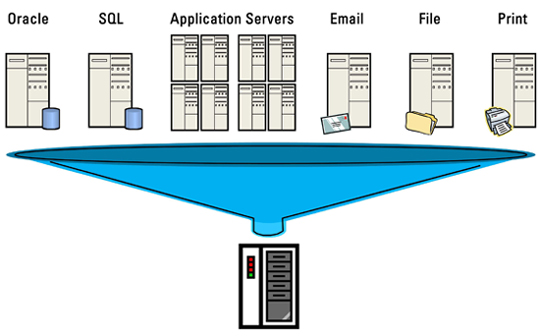1. Add business application or database without increasing the number of physical hardware servers
No matter how good you are at financial planning, it’s tough to anticipate when your company may need to accommodate an influx of new employees or new customer accounts that could put a strain on your technology resources.
We can take an example of a client, an 18-person business, that was already running two servers and that was evaluating a new, dedicated system to run a customer relationship management (CRM) application. The client’s team determined that by investing in slightly more robust multiprocessor hardware, the customer could replace one of its existing servers with a virtualized machine that run both the new application along with the old ones. What’s more, the investment laid the groundwork for its team to work remotely, while still retaining access to the applications they needed to do their jobs.
The server hardware that the client bought in order to make this happen was on the high side of what it would have had to pay for a dedicated server (between $5,000 and $10,000), but it now only needs to be concerned with the ongoing maintenance costs for one piece of hardware that acts like two servers. So, the company still has only two physical servers to manage, but it has extended the productivity of its employees while adding another application.
2. Enhance your disaster recovery plan.
One very real strategy made possible by virtualization is a disaster recovery plan. Virtualization allows a small business to create ongoing back-up snapshots image of a database or business application that can be replicated in more than one place.
If the main piece of hardware fails, the application can be restored from the fail-over server in a matter of two hours versus 72 hours. Most small businesses are horrified by the thought of their systems being out of commission for more than a day.
The rise of quad-core server hardware has made this process simpler and more affordable. This might cost a small business a little more in terms of RAM or storage, but they can do so much more with that one server and the virtualization software.
3. Stretch your technology budget.
Virtualization is compelling because it enables short-term and long-term cost reductions in systems maintenance, office real estate and electrical footprint. The additional upfront expense comes in the form of the virtualization software, which is minimal if you use a Microsoft platform; a hardware upgrade or refresh; and some additional implementation services. At a minimum, this will be 20% less than the cost of buying a second server. Companies with as few as two servers can realize an immediate benefit from virtualization.






